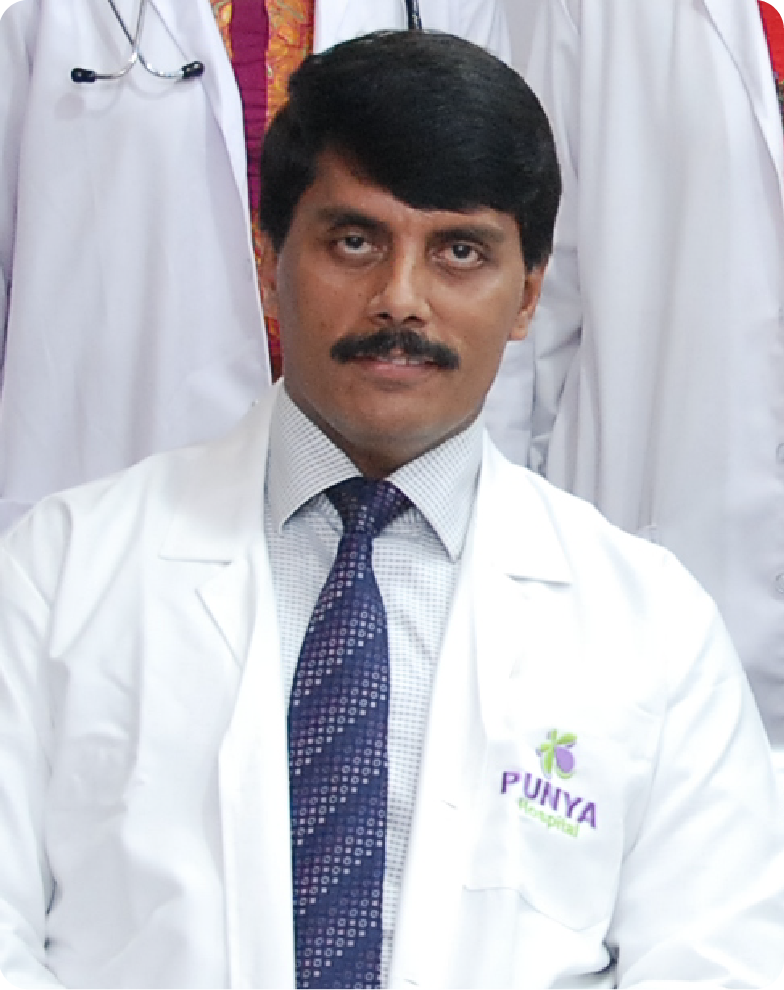Lap Nephrectomy
Lap Nephrectomy (Total /Partial)
Kidneys are fist sized organs located at the upper back side of the abdomen. They perform different types of functions like production of urine, maintenance of levels of minerals in the bloodstream, production certain hormones and circulation red blood cells. Nephrectomy means a surgical procedure in which a part of the kidney or a complete kidney is removed. When a kidney is damaged or when the kidney is having cancerous growths, or when kidney is donated for transplantation, nephrectomy becomes inevitable. Nephrectomy can be done in the traditional way of open surgery through a large incision in the abdomen or the side. This surgery can be done as laparoscopic surgery through three or four small incisions. There are three types of nephrectomy. They are: Complete nephrectomy: When the surgeon removes the entire kidney it is known as complete nephrectomy. Partial nephrectomy: When the surgeon removes only a part or portion of a kidney it is known as partial nephrectomy. Donor nephrectomy: When somebody donates his kidney for transplantation, then the surgeon will remove the healthy kidney and this is known as donor nephrectomy.
Whether you need partial or complete nephrectomy?
This is a very important question which you have to ask yourself and get answers after discussing with your surgeon.Another important question which requires answer is whether the surgery has to be conducted in the conventional way as an open surgery or whether it is sufficient that the surgery be done as a laparoscopic procedure which will be less invasive, more easier and more convenient. Your surgeon will evaluate the various options and decide which is the best option for you and he will be ready to explain the circumstances which lead him to his conclusions.
Laparoscopic procedure
This is a minimally invasive procedure. Through small incisions in the abdomen the surgeon inserts a laparoscope and other instruments required for conducting the surgery. Laparoscope is an instrument with a light source and camera connected to a long tube, the other end of which is connected to a monitor resting in front of the surgeon. Through this monitor he sees the video images of the organs and the surgery that he is carrying out and he conducts the surgery remotely controlling the instruments inserted for surgery. If kidney is to be removed one incision is made proportionally bigger. The surgeon carefully resects the kidney from all its connections to the body structures and the same is removed out through the larger incision. After completing the surgery the incisions are stitched and they are closed.
Monitoring kidney function after the surgery
It is not very difficult to live with only one whole kidney or with one whole kidney and a part of the other kidney. Yearly checkups for monitoring the kidney for the following functions will be charted by the surgeon after the completion of kidney removal surgery.
- Blood pressure: Decreased kidney function can increase the blood pressure Which will decrease the kidney function and this may add cumulatively
- High protein urine levels in an indication of damage to the kidney.
- Reduced filtration rate of the kidney which can be established through blood test is also an indicator of the poor functioning of the kidney.
OUR TEAM

Dr. Nagaraj B Puttaswamy
Senior Consultant - Laparoscopic Surgeon Bariatric Surgeon and Surgical Gastroenterologist


